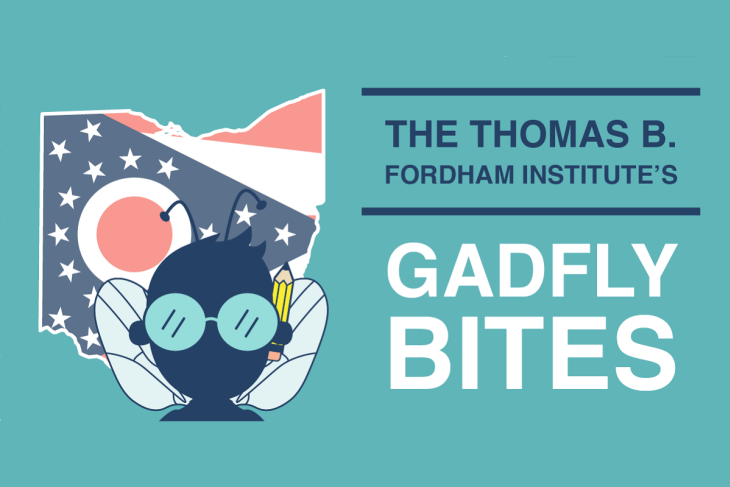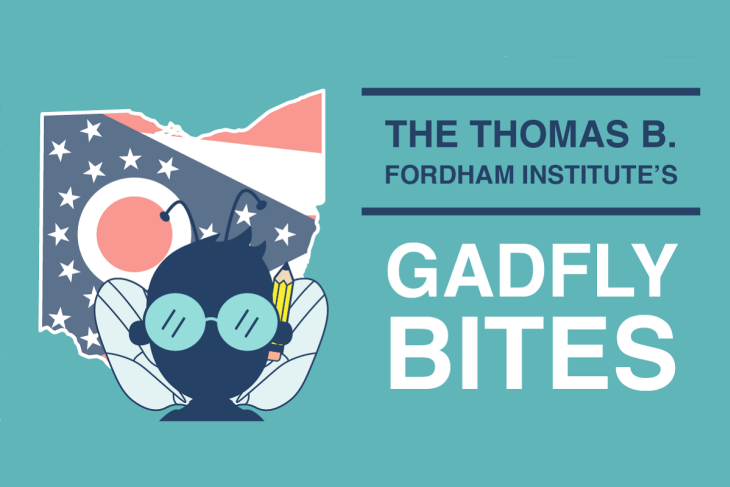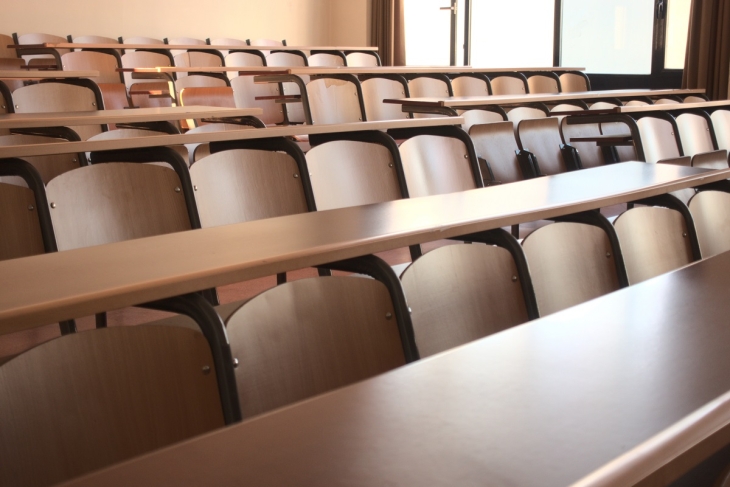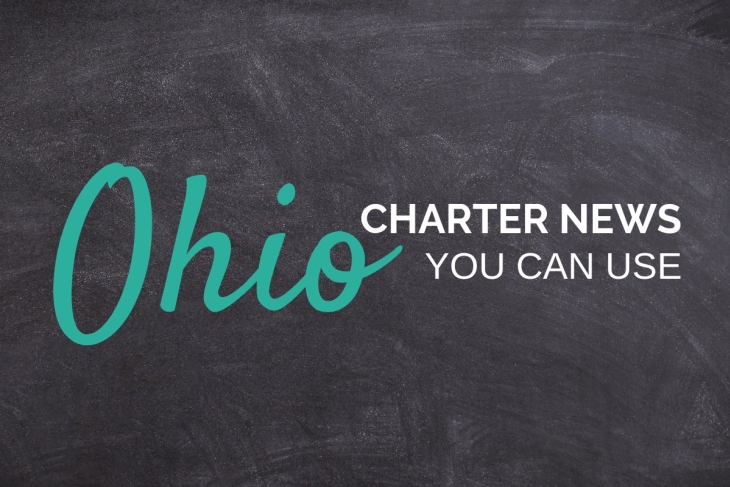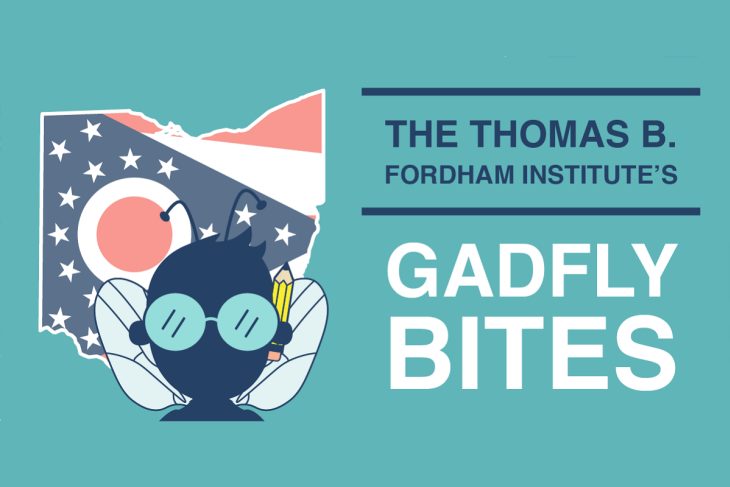- The pandemic derailed many high schoolers who are no longer on track for graduation. Here’s how schools can fix that. —Robert Balfanz
- “Weary of turmoil and division, most teens still voice faith in future, Post-Ipsos poll finds.” —Washington Post
- How one Colorado school is addressing the pandemic’s toll on literacy. —Chalkbeat
- “Civil rights law is the wrong weapon for fighting bans of masks in schools.” —Megan McArdle
- New survey evidence indicates that Black and Hispanic parents opted for remote learning more frequently than others because they were more likely to be out of work and available to help their children at home. —The Atlantic
Cheers
- Newark’s Great Oaks Legacy Charter School is piloting a tutoring program to combat learning loss for ninth and tenth graders, whether enrolled in charter or district schools. —NJ.com
- Dozens of civil rights organizations wrote a letter demanding that the Biden administration commit to K–12 annual testing to measure and address the impact of the pandemic on students. —U.S. News and World Report
- The Aristocracy of Talent by Adrian Wooldridge explores the transformation that meritocratic ideals have had on the world and on our nation’s founding, and hopes that they can survive this generation’s eroding trust in elites. —Kay Hymowitz
- “Some governors use federal virus aid to expand school choice.” —AP
- We must get past the presentism in ed reform. —Andrew Rotherham
Jeers
- St. Louis school board halts a districtwide initiative because Better Futures, a participating organization, has ties to charter schools. —St. Louis Post-Dispatch
- “If parents thought that teachers’ unions might emerge somewhat chastened by their performance during the nation’s pandemic year, think again.” —Commentary
- Closures have failed students from the beginning, with disadvantaged students faring worst. Schools need real plans to help students recover. —New York Times
Gadfly Bites will be on vacation for a bit, you lucky readers; but your luck runs out on 9/8/21 when it all starts again.
- Here is a fantastic look at two central Ohio families whose children have been thriving thanks to the Ohio Autism Scholarship. They will continue to thrive due to the increase in funding for the scholarships as enacted in the new state budget. Just don’t call ‘em “vouchers”, OK? Link (Columbus Dispatch, 8/24/21)
- The worst fears of elected school board members and teachers union reps in Cincinnati City Schools have not come to pass in the switch to non-dedicated public transit routes for school transportation so far this year, even though a couple of tweaks of the plan and some additional student/family education information have been required. You would think that this is good news and would make those nervous feel a little better, but it appears that Chicken Little’s not going to be happy unless the sky actually falls. (Fox 19 News, Cincy, 8/24/21)
- In case you missed it, Ohio has a new interim state superintendent locked down (fingers crossed!) for when Paolo DeMaria retires next month. But the newb was not finalized without some agita among state board members related to the state’s current strategic plan for education. (Columbus Dispatch, 8/23/21)
- Finally, you may have heard that “high-dosage tutoring” is the penicillin needed to combat whatever we’re calling pandemic-related learning loss at the moment. (Honestly, if the Executive Director of Accelerated and Extended Learning at Columbus City Schools says point blank, “There is a learning loss”, should the rest of us really be hiding behind euphemisms at this point?) However, since the Executive Director of Accelerated and Extended Learning at the state’s largest school district seems convinced that the answer to learning loss in her district due to 18 months of remote instruction is a huge investment in third-party online tutoring, perhaps the whole shebang needs to be called into question. (ABC6 News, Columbus, 8/23/21)
Did you know you can have every edition of Gadfly Bites sent directly to your Inbox? Subscribe by clicking here.
For nearly twenty years, EdChoice has provided tens of thousands of students with the opportunity to attend private schools via state-funded scholarships, also known as vouchers. Eligibility for “performance-based” EdChoice has traditionally been tied to school report card ratings; students who were slated to attend a school designated by the state as low-performing were able to apply. “Income-based” EdChoice scholarships, on the other hand, are available for students whose families fall below a certain income threshold.
In December 2020, Senate Bill 89 made two big changes to EdChoice. First, it tied performance-based eligibility to federal poverty rates and performance index scores rather than school report card ratings. Second, it broadened income-based eligibility to include more middle-income families. These reforms made private schools more accessible to thousands of families.
The legislature didn’t stop there, though. The recently passed budget also made some big structural changes, including eliminating the cap on the number of EdChoice scholarships the Ohio Department of Education (ODE) can award each year, increasing the maximum scholarship dollar amounts, and directly funding EdChoice scholarships rather than relying on deductions from districts’ state aid.
These are important adjustments, and they’ll certainly revolutionize Ohio’s voucher landscape on a broad scale. But the budget also included some smaller, under-the-radar provisions that could have a huge impact on individual students and families. Here’s a look at three important ones.
1. Eligibility expansion
The budget identifies several new groups of students who will be automatically eligible for an EdChoice voucher. For example, scholarships are now available for foster children and kids who have been placed with a guardian, legal custodian, or kinship caregiver. Such a small tweak may not seem important to those who have no experience with child custody issues. But kids in foster care move far more often than their peers, and that can mean changing school districts, as well. Being able to enroll in a private school—and remain enrolled despite changes in their home address—gives kids consistency and stability. Students who are placed in foster homes or with legal guardians may also have unique needs that require specialized attention. For foster parents or legal guardians who can’t afford private school tuition, a voucher could be a crucial lifeline that allows them to find the school that best meets their student’s needs. Eligibility has also been extended to students who live in a foster home but aren’t a foster child themselves. This is hugely important because it’s much easier for families to manage transportation, extracurriculars, adult involvement, and myriad other issues when kids attend the same school.
The budget also extends EdChoice eligibility to students who were previously diagnosed with special needs. In Ohio, there are two voucher programs that serve students with disabilities: the Autism Scholarship Program and the Jon Peterson Special Needs Scholarship Program. To take advantage of these scholarships, students must have a current IEP through their district of residence. When students no longer require special education services, they cease to be eligible for a voucher. For families who wish to keep their student enrolled in private school but can’t afford it without assistance, this loss can be devastating. Thanks to the recent budget, however, these families will have the option to smoothly transition to the EdChoice program.
2. Eligibility awareness
One of the longstanding issues with performance-based EdChoice is that it can be difficult for families to determine whether their children are eligible. Neither ODE nor traditional public districts are required to notify parents if their child attends a designated school. Nonprofit organizations, like School Choice Ohio, work incredibly hard to notify parents of their eligibility and answer questions, but their reach is limited and their work contested by powerful entrenched interests. Parents who are savvy enough to find the designated school list that ODE publishes annually can track down their eligibility status, but that assumes they know where to look.
A provision in the state budget should remove some of the guesswork. It requires ODE to create a system that allows families to input an address and receive a response within ten days that confirms whether the student living at that address is eligible for EdChoice. To keep the system updated, districts will be required to provide the attendance zones of their designated buildings by January 1 each year. Districts are also prohibited from contesting eligibility determinations. This isn’t a perfect solution. Ideally the system would be able to confirm eligibility immediately. But this is far better than the status quo, and should make it easier for parents to determine their options.
3. The application process
There are also administrative changes that should make the application process smoother for families. For example, the budget eliminates the separate application windows for both EdChoice programs and the Cleveland Scholarship Program, as well as the confusing “priority application window” for income-based EdChoice. Instead, the legislation requires all three programs to have an application window that opens on February 1. Having one application window for all three programs should make communicating with families much easier and should eliminate potential confusion among applicants.
Additionally, ODE must now determine if students are eligible and notify them within forty-five days of receiving their application for any of these three programs. Under current rules, families must be notified within thirty days of ODE making a decision, but there are no specifications for how long the department can take to actually make their decision. This means that families could be waiting for months to find out whether they’ve been awarded a scholarship. These changes will ensure that families get a quicker turnaround on scholarship status and can plan accordingly for the coming fall.
***
Over the last few years, Ohio has seen plenty of changes to its five voucher programs. Expanded eligibility, increased dollar amounts, and the transition to direct funding are huge improvements. But seemingly small changes—guaranteed eligibility for vulnerable students, better information, and a clearer application process—deserve praise, as well. These provisions will make voucher programs work better for students and families. And at the end of the day, that’s what matters most.
- Schools across the Miami Valley areas, including charter and private schools, are finding it even more challenging than usual, they say, in filling open teaching and other positions. Remember that Dayton City Schools is planning on using a ton of its federal Covid-relief funding to put two teachers in every lower-grade classroom in the district, creating an even bigger challenge for
those neighboring districtsthemselves. District reps announced late last week that they had at least filled those additional teaching slots, even though a lot of support positions remained unfilled as the school year began. (Dayton Daily News, 8/22/21)
- The superintendent of Akron City Schools calls it “a great challenge to have” when speaking of a teensy bit of overcrowding the first week of the new school year at one district elementary building. While there is some talk in this piece of how to deal with growing district enrollment, I don’t think it’s necessary to get too excited just yet. The district still has a clutch of undersubscribed buildings, including the former elementary building less than five miles away from the “great challenge” building that had been fully shut down between 2014 and 2020 and now has a hundred or so preschool and Kindergartners. (Akron Beacon Journal, 8/20/21)
- A much larger and “less great” challenge to have, it would appear, is diversifying the K-12 teaching ranks in Ohio. According to data, 94 percent of the state’s teachers are white and approximately 1 in 3 Ohio public school districts have a 100 percent white teaching staff. There’s a lot of discussion in this very long piece of how districts could achieve higher diversity, but zero percent discussion of the situation in charter, STEM, or private schools. Worth a look, y’all? Just askin’. (Cincinnati Enquirer, 8/18/21)
Did you know you can have every edition of Gadfly Bites sent directly to your Inbox? Subscribe by clicking here.
Advocates for social and emotional learning (SEL) have pushed for schools to embrace the teaching of healthy life skills to students. This can take many forms, from school-wide policies that foster a positive and exemplary culture for students, to a program where teachers are taught to model behaviors in their classes for students to learn from, to a course where social and emotional skills are taught from a curriculum.
According to Fordham’s recent parent survey on SEL, some parents prefer schools take an indirect approach, especially moms and dads who identify as Republican. This leads Adam Tyner, the report’s author, to conclude that schools shouldn’t “ignore the indirect methods do develop SEL,” such as “when teachers assign historical or literary fiction about characters who struggle to overcome a challenge or hold their students accountable for completing their homework.” Republican parents are also more inclined to express concerns that the values taught through SEL would conflict with their own values. Likewise, majorities of all parent types agreed that there is not enough time in the day to teach core academics and SEL, which could indicate concerns of SEL taking away from the class time required for successful academic achievement.
These points are well taken, but research and my experience teaching social studies to sixth, seventh, and eighth-graders at an all-boys school for the past six years suggests that we should also find explicit ways to foster social and emotional learning.
At my school, every Monday’s homeroom class period was devoted to a curriculum-guided SEL class that began with an open dialogue circle where students shared news of their lives, whether it be positive or negative. We then launched into the lesson outlined in the curriculum, covering topics such as non-verbal and verbal communications skills, emotional regulation strategies, or how to be assertive without being aggressive. During the pandemic, participation in these talks increased, with many students jumping at the opportunity to express what they were going through. Whether it be about their difficulties getting along with siblings, fights with friends, or struggles with depression, it was remarkable to see these students put everything on the line in front of their peers. And they benefited greatly from it.
So why an explicit approach? And what about parents’ concerns about teaching SEL? First, the types of difficult conversations I experienced with my students may not come up naturally in typical classroom settings, and not all teachers have the ability to properly address them if they do—especially those without formal training in SEL instruction. The more explicit approach that my school took guaranteed that important skills and development were addressed clearly, directly, and effectively.
Second, an explicit approach to SEL is a strategy that’s supported by other notable organizations, including CASEL, one of the lead groups promoting SEL research and implementation, and Hanover Research, who labels it as a “best practice” for schools implementing SEL. Worries of SEL taking away precious time from core academics is understandable, and some SEL curricula, like Caring School Communities, can serve as their own classes with daily thirty-minute lessons. But research has shown that improving students’ social and emotional skills through direct teaching can boost not just their well-being, but also their academic performance. So while the most intensive version of direct SEL instruction may take up some daily class time, it can also translate to academic improvement for students. Likewise, schools can get creative with when they implement SEL to minimize its disruptiveness, as my school had done.
Third, given the intensity of recent debates over what is included in school curricula, of course some parents would be concerned that a class called social and emotional learning would contain values that conflict with their own. But the truth, as revealed by the Fordham survey, is that large majorities of parents already support schools teaching SEL-related skills, such as how to “empathize with the feelings of others” or how to “approach challenges in a positive, optimistic way.” The curriculum implemented in my school had no inherent pieces on teaching grand societal values or beliefs, only social and emotional skill sets. Though I cannot say that there’s no such SEL curriculum anywhere in America that contains decisive values, the purpose of social and emotional learning is not to instill societal or political beliefs into students.
Fordham’s new survey shows some differences regarding how parents want to see SEL implemented in their child’s school. But it also finds broad support for schools’ role in developing those skills. Whether the method of doing so is direct or indirect, it’s encouraging to see that the majority of parents understand the importance of their child’s social and emotional development.
Post-secondary preparation supports are numerous and common in high schools across the country. They run the gamut from Advanced Placement courses and immersive career-technical training to advising and guidance counseling. While voluntary, such supports are often indispensable for students of all backgrounds, especially when the goal is college enrollment. A recent paper provides an interesting case study of one such program in Ohio, aiming to show whether its structure helps build the “cultural capital” of students to help them achieve their college enrollment goals. Even though the data are incomplete, they nonetheless provide insight into students’ engagement in these initiatives.
Researchers from Adrian College, Drexel University, and Bowling Green State University—along with a counseling staffer from Toledo City Schools—looked at the local implementation of a college preparation program funded in part by the federal GEAR UP initiative in an unnamed Ohio high school. The U.S. Department of Education does not codify GEAR UP’s structure, nor do the states receiving funding. The Ohio Department of Higher Education says it is “focused on embedding a college-going culture in targeted schools and communities” through GEAR UP in order “to increase the number of low-income students prepared to enter and succeed in postsecondary education.”
Each grant recipient—generally a consortium of K–12, higher education, and community partners—is responsible for creating a program that it feels is most supportive of its students. The version under study here provides direct student services such as academic coaching, tutoring, and multiple college visits. It also offers parents information about financial aid and how to maximize college fair contacts, as well as providing teacher professional development to support students in their college-going goals. While the state prioritizes lower-income students, most GEAR UP providers don’t limit participation based on income. Students can earn college scholarships via participation, based on their course grades/GPA, discipline and attendance record, community service, and extracurricular activities.
For the program under study, these four activities are measured in a Benchmark Binder that students must compile during high school, along with parental/adult involvement and some bonus activities. Points are assigned on a rubric for each area—with the heaviest weight on academic outcomes and community service—and students who reach a prescribed minimum of points by graduation receive a GEAR UP scholarship (approximately $2,000 to $5,000 per year) to be used at any postsecondary institution of their choice. A high school teacher and four graduate students from a local university partner are available at the students’ convenience to advise, assist, and check progress on Binder completion.
While previous investigations have examined the outcomes of students with GEAR UP access to students without such organized support, the current study looks at a single school where all students had access to GEAR UP but chose varying levels of engagement with it.
The researchers examined a sample of the seniors in the graduating class of 2011, all of whom indicated that they planned to pursue higher education after graduation. Just over 58 percent of the sample were categorized as “active”—that is, they completed their Benchmark Binder and successfully earned the minimum amount of Binder points by graduation to qualify for the scholarship award—and the rest were categorized as “passive,” not having completed or earned the minimum number of Binder points. While demographic comparison was not a primary interest of the researchers, they note that there were 40 percent more females and almost 10 percent more non-white students in the active GEAR UP group compared to the passive group. There were slightly more than 30 percent more low-income students in the passive GEAR UP case group compared to the active case. Focus group interviews were held with students in both groups to determine motivational differences between then.
The results are reported by areas of similarity and areas of difference between the active and passive groups. For example, average GPA increased and average attendance rate decreased for both groups from ninth grade to twelfth grade, while average student behavioral incidents decreased for both groups. Focus group data indicated that students in both groups realized at some point in their four years that they needed to “buckle down” if they were serious about matriculating, and the language each group used was similar. The later students realized they needed to put in more work to reach their goal, the harder it was for them to do so successfully, whether they followed the GEAR UP protocols or not. Participation in extracurricular activities was reported to be easy for members of both groups thanks to numerous sports offered by the school, while community service hours proved more difficult for both groups. Generally, this was due to the off-campus, after-hours nature of the service opportunities available. Positive adult involvement in activities related to building college-going capital was reported as equally important by students in both groups.
However, it was differences between the groups that ultimately told the tale. Although both groups saw an increase in average GPA over four years, students in the passive group went from just 1.88 to 1.97 while the active group went from 2.79 to 3.17. The active group notched a final GPA average of 2.93 (equivalent to a B), while passive students reached just 2.03 (or a C average). Behavioral incidents among the passive students decreased significantly during their high school careers (from 2.11 incidents per year as freshmen to a dramatically lower 0.31 incidents per year as seniors), but the early suspensions and other disciplinary actions took their toll on many students’ momentum and confidence. By contrast, active students started low (0.19 behavioral incidents per year) and ended even lower (0.06 incidents per year). While these data indicate hugely unequal starting points for students, the ultimate goal of such college preparatory efforts is to equalize them over time. It is specifically these students—those who don’t already have an inside track toward college-going capital through family history, financial support, or early academic success—who need the focused support GEAR UP is meant to provide.
In the end, it is a lost opportunity that the researchers chose not to investigate or report how many students in each group ended up successfully enrolling in college. Did the Binder completion effort help students gain capital they would not have otherwise had? Or was it simply one more checkmark for overachievers? Did students who dismissed the effort as early as ninth grade get to college without GEAR UP? If so, who were they and who or what else guided them to their college goal? Could students who didn’t enroll in college have changed their fate with a stronger or earlier effort to complete the Binder activities? With any luck, the research team will examine questions such as these in future studies.
While there is no one sure path into college, college preparatory programs in our high schools should provide the broadest possible opportunity for students to show what they know and can do. And those opportunities must start early, be aligned to what colleges value, be accessible realistically around students’ lives, and clearly demonstrate their importance to students’ future plans.
SOURCE: Christine M. Knaggs, Toni A. May, Kathleen T. Provinzano, John M. Fischer, and Jeffrey Griffith, “Measuring College-Going Cultural Capital of Urban High School Seniors in a Voluntary College Preparatory Program,” The High School Journal (April 2021).
Lingering
Summer lingers for many students across the country, as does fear of extended learning loss after two Covid-disrupted school years. A charter school in Newark, New Jersey, is starting a tutoring program to help students across the city get caught up and eventually move ahead again, no matter what school they attend. Kudos to the Great Oaks Legacy Charter School community!
First day of the new school year
Many students have already started the 2021-22 school year, including André Nash III, who is featured in this Dispatch story. André started first grade at Cornerstone Academy in Westerville, attending fully in-person for the first time.
Return of high school sports
High school football is back as well. Here’s a great profile of James Lee, the new coach at KIPP: Columbus, and his team. The charter school’s fledgling program and its players seem to be in great hands.
More choice?
Sen. Andy Brenner, chair of the Primary and Secondary Education Committee, told public radio this week that he and his colleagues are hearing increased calls from their constituents for more school choice in suburban areas of the state.
Calling out a tired argument
The editorial board of the Arkansas Democrat-Gazette this week blasted knee-jerk charter school critics in the state who accuse charters of “cherry-picking” their students. “Those of us who know better,” they write, know that “charter schools are public schools, thank you, and that most use a lottery system to pick students if there is a waiting list. And point to the number of charter schools operating in the most challenging ZIP codes. Fact is, the cherry-picking argument is weak.”
Opportunity to serve
Are you interested in making an impact on education at the national level, or know others who are? Starting in September, the National Assessment Governing Board—the organization which oversees the National Assessment of Educational Progress (NAEP), will be seeking nominations for Board positions to be filled in 2022. Nominations will be accepted from September 8 through November 1 for a representative eighth-grade teacher, fourth-grade teacher, secondary school principal, and a parent/member of the general public. You can find more information about the open positions, Board members’ responsibilities, and the submission requirements here.
*****
Did you know you can have every edition of the Ohio Charter News Weekly sent directly to your Inbox? Subscribe by clicking here.
- Here’s the final look at Columbus City Schools’ summer program this year, including the news that 112 of the 412 seniors in the class of 2021 who had yet to meet graduation requirements in June accomplished that task over the summer and walked the stage last weekend. The remainder are expected to return for the 2021-22 school year as fifth-year seniors. Additionally, eight summer grads were from classes prior to 2021, and nineteen summer grads, interestingly, were from the class of 2022 and thus graduating almost a year early. Lots more details in the piece as well. (Columbus Dispatch, 8/18/21)
- Speaking of education recovery from the pandemic (were we?), South-Western City Schools in suburban Columbus has provided a detailed plan of how they are going to spend down their ESSER funds. I’m not sure how upgraded sound and lighting for their auditoriums is meant to figure into that work, but I suppose that if you’re going to contemplate overcoming two (three?) years of Covid-disrupted learning, it can’t hurt to do so while awash in $4.4 million worth of Leko LEDs and flattering pink gels. (ThisWeek News, 8/17/21)
- And still speaking of pandemic recovery (really, were we?), we learn from this piece that Kindergarten enrollment in northeast Ohio school districts has rebounded to pre-pandemic normal this year. Well, in the suburban districts reported here, that is. (News 5, Cleveland, 8/19/21) You know what else is happening in the suburbs? Increasing calls for more charter schools and other choice options, it seems. (Ohio Public Radio Statehouse News Bureau, 8/20/21)
- The good folks at the Enquirer had to work hard to find a story about first day of Cincinnati City School transportation problems with students using the standard SORTA bus routes. They didn’t actually manage to find one, in my estimation, but that didn’t stop ‘em from writing more than 1,450 words on it. On the plus side: the general newspaper-reading public now knows the tricky difference between the two Number 11 routes. (Cincinnati Enquirer, 8/19/21)
Did you know you can have every edition of Gadfly Bites sent directly to your Inbox? Subscribe by clicking here.
There is a heated debate going on among school choice advocates. Neal McCluskey at Cato called choice “the key to peace in education.” Conversely, Robert Pondiscio, a senior fellow at AEI and Fordham, suggested that an argument centered on “conflict avoidance” is ineffective. Others have weighed in since then in blogs and online. The essential question: Is school choice sufficient to reform American education?
Their civil disagreement belies a tension within the conservative movement writ large. Speaking in generalities, there are two wings—the libertarians and the institutionalists—of which the modern Republican Party has made tenuous allies. These same strains run through the education reform movement, and they explain the current kerfuffle over school choice.
On one side, we have the libertarians, disciples of Milton Friedman and Friedrich Hayek who tout the capacity of a market-based system and individual liberty to organize society. When we all have the freedom to live and choose, prosperity—or in this case educational attainment—abounds. Myriad sects can all craft curricula and instruction to reflect their values, be they critical race theory advocates or critics, direct instruction defenders or project-based learning pedagogues, religious or secular. No group must exist at the expense of the other. Understood so, school choice is the “only policy” that can incentivize any meaningful reform in schools.
On the other side are the institutionalists, the disciples of Edmund Burke. Burke watched as the French Revolution ravaged the country, with revolutionaries destroying systems and institutions that were built and refined through the ages. These institutions had acted as stabilizing and unifying forces in France, and their deconstruction led not to utopian freedom but oppressive conflict. Not a total enemy to liberty, Burke was only wary of what would come of it, holding in equal esteem the wisdom built into tradition and existing institutions. In regards to our school systems, we have a shared interest in a universal “quality of education” and our “civic mission” beyond mere choice.
These two strains of thought—libertarianism and institutionalism—can more often than not co-exist and even complement each other. The institution of the church is better off without state interference, for example. But when the institution in question is a public one, these two pillars of American conservatism conflict.
Our public school system is one of America’s most influential institutions. It is the means by which we secure a generally educated populace. It is the place where students from diverse families and worldviews come together with a common purpose. It is the mechanism through which we instill a common civic culture and inculcate an American story. And the implementation of universal vouchers—a libertarian ideal—threatens to nuke what is often the most unifying institution in many localities—an institutionalist ideal.
This conflict between the two wings of the reform movement needn’t be a stalemate, though. They are not oil and water that can never mix, but are more akin to a chemical reaction that produces a new substance. There is wisdom and insight that come from their debate.
A means to palliate these competing undercurrents can be found in our nation’s founding. In Federalist 10, James Madison acknowledges that in any free society, factions are inevitable. Unless a government completely constricts individual liberty, different beliefs and thereby conflicting interests will arise, which in turn leads to conflict. Considering their inevitability, Madison suggests a system that allows for but manages factions. We cannot alter the cause of factions and so must manage their effects. To do so, the founders created a representative government with various checks and balances that allow for conflicting parties but foster productive engagement in place of one party dominating the other.
School choice can be understood as a continuation of our founding ideals, a mechanism by which we allow for competing factions within the same system. With it, we foster the coexistence of differing institutions, and we defend the American system as a pluralistic structure. Both Burke and Hayek smile.
Choice works towards the unifying goal of institutionalism. In the collection of essays School Choice Myths, McCluskey writes that this occurs through “different groups having to work together to achieve something mutually beneficial.” When all parties in the school agree on first principles, they can work together to build the institution instead of fighting it out in school board meetings. Speaking metaphorically, all stakeholders face the same direction instead of facing off. In the same book, Professor Patrick Wolf reviewed thirty-six studies, and the majority found that “school choice had positive effects on civic values or behaviors.”
Even so, school choice is not a panacea. When a small town only has one central school—whose football games and musical concerts are central cultural community events—and the nearest alternative is an hour’s drive away, school choice is a less appealing solution to parental dissatisfaction or instructional mediocrity. Not to mention the fact that even with school choice legislation up for debate in thirty-three states, it will likely be decades before we have a truly pluralistic system. Finally, unless we entirely privatize the system and remove all public funding, taxpayers have a right to pressure what happens inside of school walls.
The hand-waving over critical race theory provides a useful example of this ongoing tension at play. While I spurn the mandates against critical race theory, that any state legislature should eschew drawing lines around acceptable curricular topics is silly. Try preaching creationism, Satanism, or Wahhabi Islam from the lectern and see how the public responds. We cannot so focus on the failures of federal policy or fear bureaucratic imposition as to then fail to use the delegated powers of state governments to, well, govern schools.
The reality is that there are positive policies with a track record of success that can exist alongside a pluralistic structure, and that can ensure the institution thrives even while allowing for broad parental choice. Senator Mike Gallagher provides the compelling example of Mississippi, which rose from the bottom to near the top of NAEP literacy scores. The state encouraged the training in and use of phonics within elementary classrooms through policy. More broadly, alongside choice, we could still set basic standards, ensure minimum quality with test scores, establish a barebones state-level curriculum, ban certain pernicious ideologies, and the like. I wouldn’t mind an art school skipping advanced calculus, but I’d spurn any curriculum that fails to achieve basic literacy, for example. And I’d like all U.S. students to read the Constitution regardless of their school choices. We must positively govern schools beyond mere libertinism.
No conservative that I can think of opposes school choice. Rather it’s a matter of “what else?”—if there even is a “what else.” Returning to Burke, who himself tried to make amends between liberty and tradition, can perhaps bring this analysis to a close. He wrote that, “To give freedom is still more easy...it only requires to let go the rein. But to form a free government...requires much thought, deep reflection, a sagacious, powerful, and combining mind.” In other words, school choice is necessary but not sufficient. Perhaps it is time that we stop arguing about the merits of school choice and begin to discuss how we will best build our pluralistic institutions.


